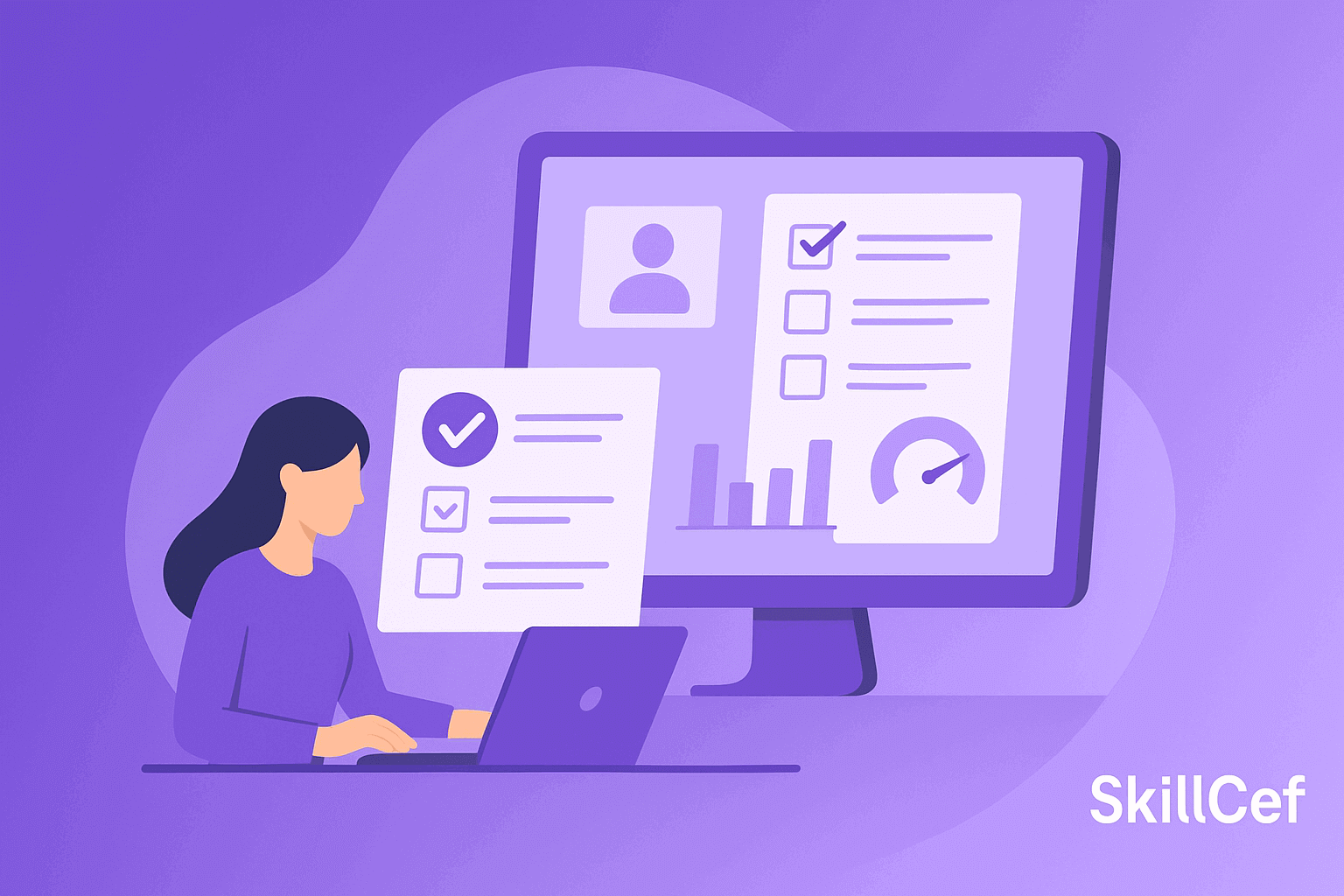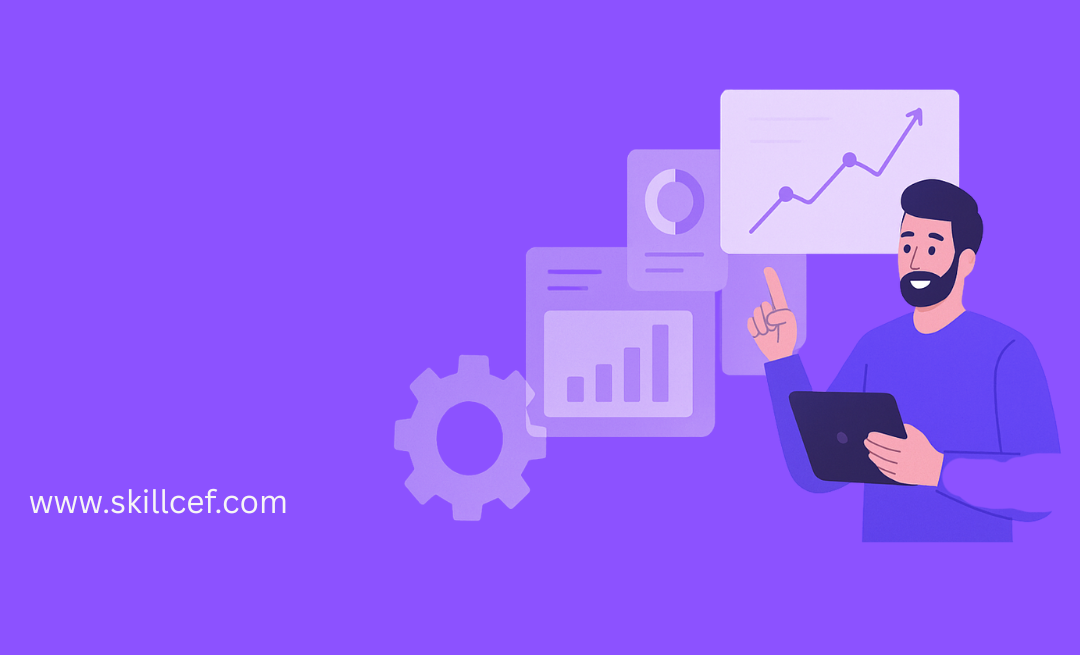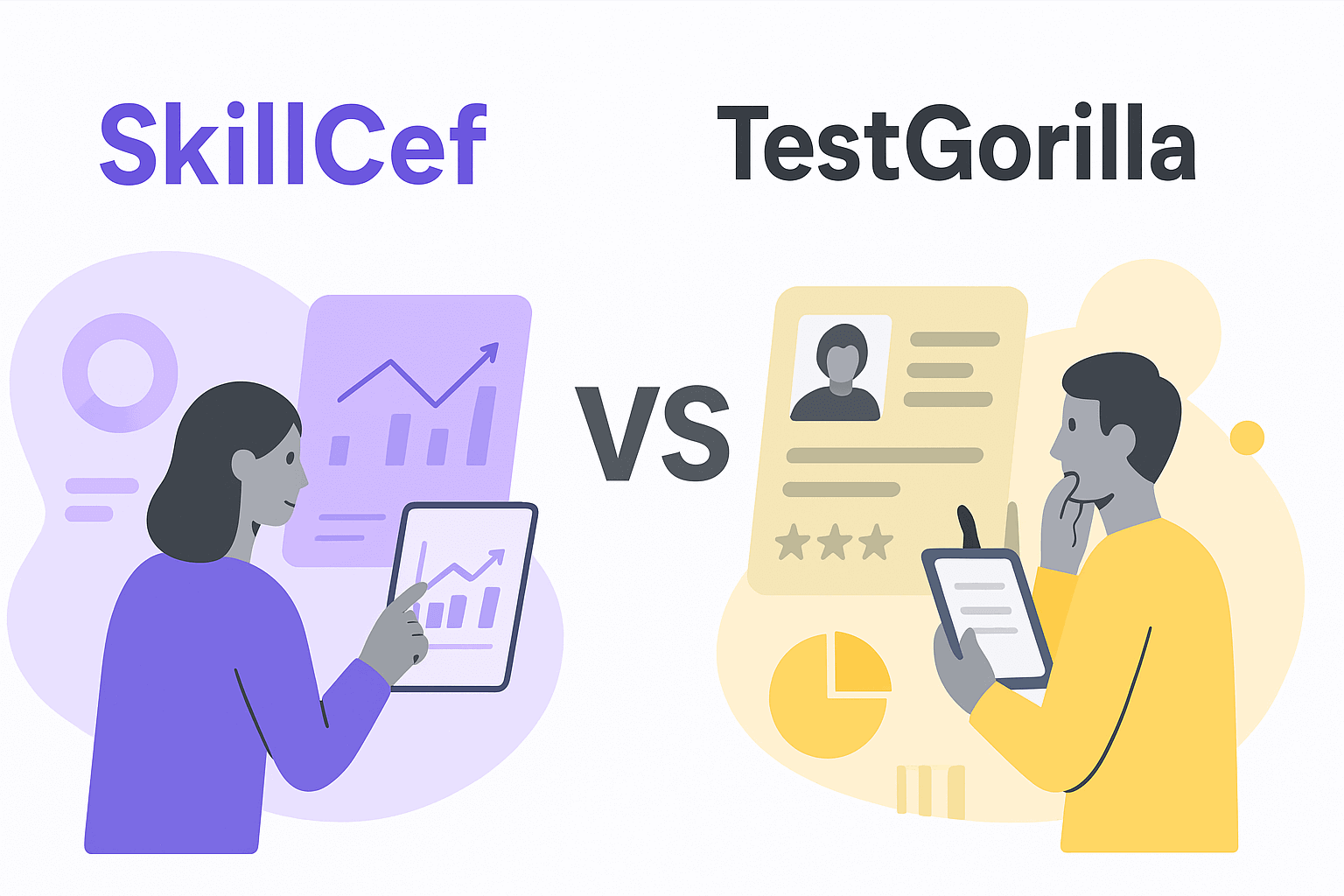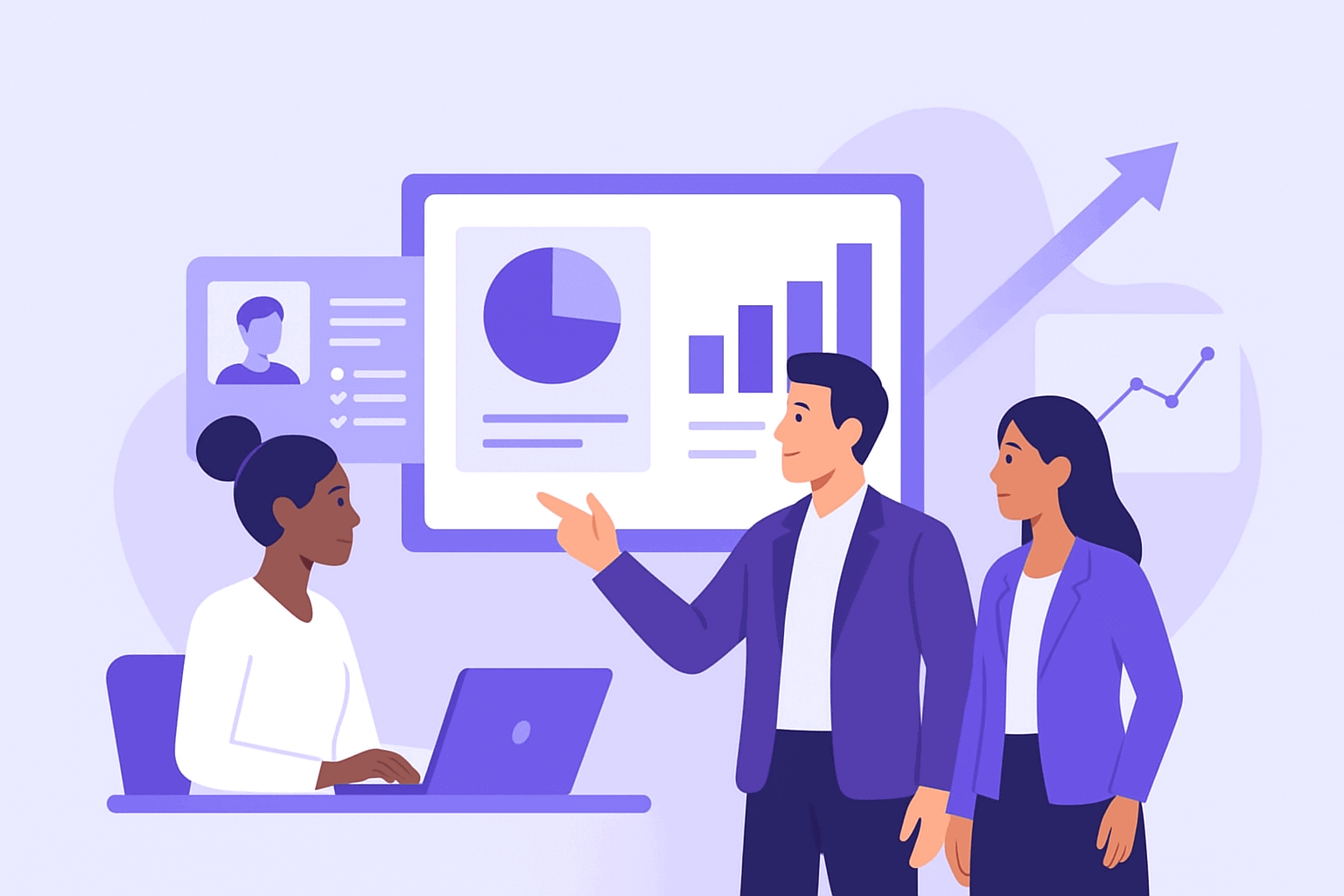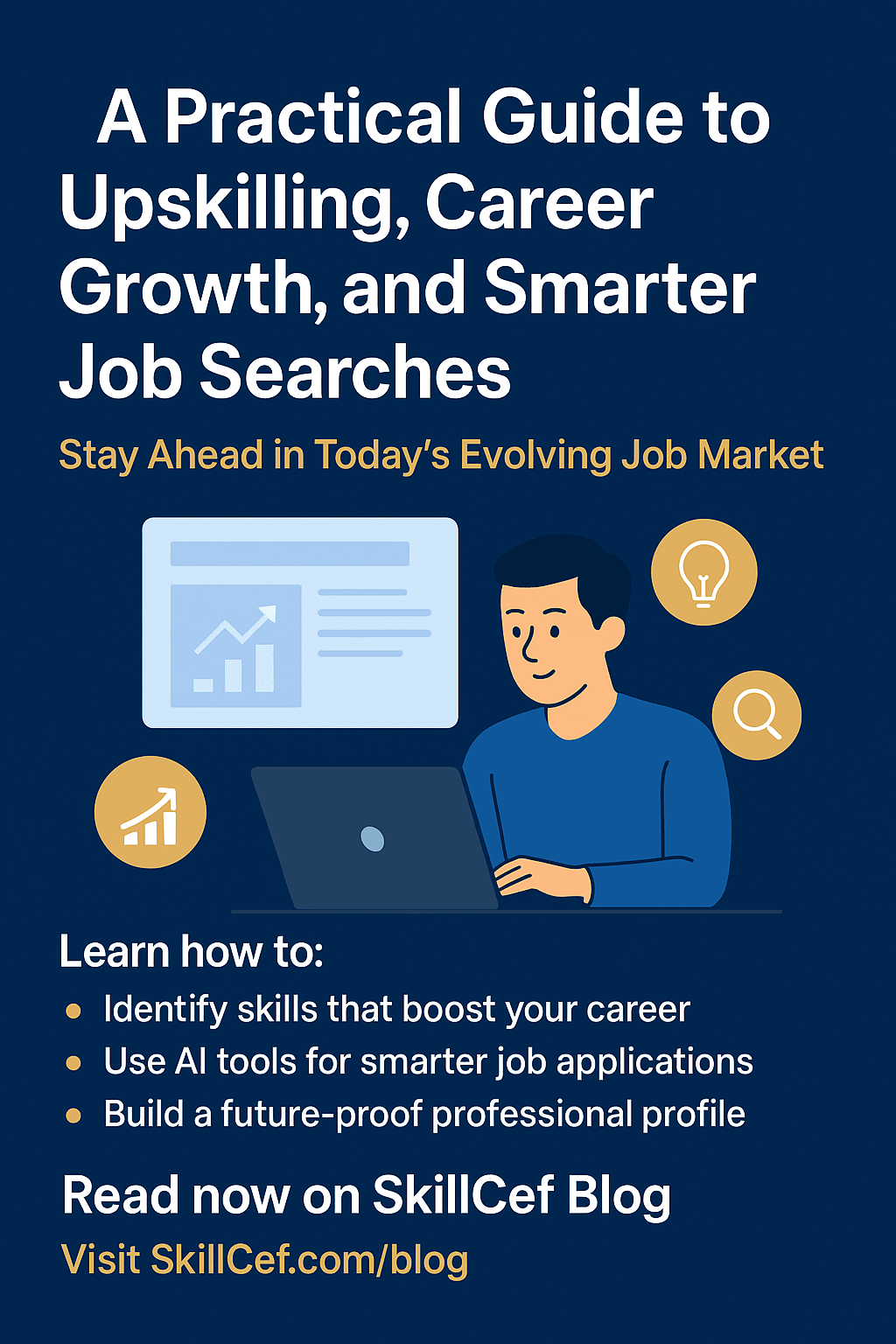
A Practical Guide to Upskilling, Career Growth, and Smarter Job Searches
The technology industry changes faster than most people expect. Languages, frameworks, and platforms rise in popularity and fade within years. According to the World Economic Forum’s Future of Jobs Report (2023), nearly half of all workers will need new skills within five years.
For developers, data professionals, and students learning to code, this means one thing: what you know today might not be enough tomorrow.
Yet those who keep learning — and learn the right skills — move forward faster than others.
This guide explains how to recognize your skill gaps, upskilling, learn efficiently, and stay visible in a changing job market.
Understanding the Modern Skill Gap in Tech
How the Gap Forms
Every new innovation shifts job expectations. Ten years ago, developers could rely on a few frameworks; today, they must understand CI/CD pipelines, APIs, and cloud systems.
A skill gap appears when job requirements outpace personal growth. It might start small — a missing library, an outdated workflow — but ignoring it widens the gap over time.
Why It Matters
Employers now value versatility and current knowledge.
Someone who can automate workflows, apply AI tools, or build scalable cloud solutions has a clear edge.
Staying updated is not just about staying relevant — it’s what keeps you employable.
Finding Out What Skills You Actually Need
Step 1: Analyze Job Listings
Start by reading job ads for the roles you want. Scan at least a dozen listings from different companies.
Note recurring tools, frameworks, and languages. These repeated skills are your priority learning areas.
Step 2: Test Yourself
Platforms such as Skillcef, HackerRank, and LeetCode allow you to test your current abilities.
Challenges reveal weak points — perhaps algorithm design, debugging, or database optimization.
Step 3: Ask for Feedback
Ask mentors, peers, or collaborators for honest reviews.
Sometimes others see skill gaps that you overlook.
Combine this feedback with your test results to create a targeted improvement plan.
Learning Smarter with AI-Supported Tools
Why Personalized Learning Works Better
Traditional online courses move at a fixed pace.
AI-driven learning adjusts in real time, tracking your progress and adapting to how you learn.
If you excel at a topic, it increases the challenge. If you struggle, it slows down and offers more examples until you master it.
How AI-Based Learning Mirrors Real Work
These platforms simulate job-like projects — debugging code, writing functions, analyzing data — not just quizzes.
Each exercise gives instant feedback on clarity, speed, and accuracy.
This repetition creates faster skill growth and stronger confidence.
Building a Consistent Routine
You don’t need marathon study sessions.
Short, regular practice — even 30 minutes a day — produces steady improvement.
After a few months, you’ll notice faster problem-solving and cleaner code.
Preparing for Technical Interviews
Beyond Knowing the Code
Strong technical ability doesn’t always translate into interview success.
Many candidates struggle with pressure or fail to explain their reasoning clearly.
Interview preparation should build both coding strength and communication skill.
Using AI-Powered Mock Interviews
AI mock interview platforms simulate real-time tests — algorithm challenges, scenario questions, or timed coding sessions.
Afterward, you receive feedback showing where you hesitated or made mistakes.
Each session helps refine your approach and builds familiarity with actual interview formats.
Practicing Behavioral Questions
Technical interviews also evaluate teamwork, leadership, and problem-solving stories.
Rehearse these out loud, using real experiences.
This ensures your answers sound natural and confident — not rehearsed.
Making Your Progress Visible to Employers
Clean Up Your GitHub or Portfolio
Showcase your best work.
Remove outdated projects and keep concise descriptions that explain what each project demonstrates.
Clarity and relevance outweigh quantity.
Highlight Verified Certificates
Digital badges or certificates from Skillcef or similar platforms build credibility.
Display them on LinkedIn, your personal website, and your résumé.
Share What You Learn
Write short posts about lessons learned or problems solved.
Sharing knowledge makes you more visible and shows employers that you’re active and thoughtful about your growth.
Rethinking Your Job Search Strategy
Focus on Quality, Not Quantity
Many candidates apply for dozens of jobs without reading the descriptions carefully.
A focused approach — applying only to positions that match your skills — improves results.
Use AI-Powered Job Matching
Modern AI tools analyze your skills and connect you with relevant openings.
They consider your portfolio, assessments, and certifications to recommend better-fit roles.
Keep Building Human Connections
Technology helps, but real progress still comes from people.
Join developer communities, attend coding events, and collaborate on open-source projects.
These connections often lead to referrals and faster hiring.
How Employers Benefit from AI Recruitment Tools
Smarter Screening
Companies often struggle to find qualified developers quickly.
AI-driven assessments help by measuring ability instead of just reading résumés.
This identifies capable candidates who might otherwise be overlooked.
Fairer and Faster Hiring
Automated screening reduces bias and accelerates hiring decisions.
Smaller organizations can compete with larger ones because they can assess skills objectively.
Balancing Tech and Human Insight
AI can shortlist candidates, but human judgment finalizes decisions.
Combining both ensures fairness and accuracy in recruitment.
Continuous Learning and the Future of Tech Work
AI as a Learning Partner
AI already helps developers write and debug code.
That same intelligence now supports learners by analyzing performance and suggesting what to study next.
The Shift to Continuous Education
Future professionals won’t take long, one-time courses.
They’ll learn continuously — through adaptive platforms that keep them current as new tools emerge.
Why Adaptability Matters Most
The real skill isn’t knowing every language or framework.
It’s the ability to learn quickly and adjust smoothly.
That flexibility keeps your career strong even as technology changes.
Summary and Action Steps To Upskilling
-
Most tech roles will require updated skills within a few years.
-
Identify your personal gaps before starting new courses.
-
Use AI-supported learning tools to speed up growth.
-
Display your progress publicly through portfolios and certificates.
-
Combine smart job search tools with real community connections.
-
Keep learning consistently — it’s your best long-term strategy.
If you’re ready to begin improving, explore Skillcef — a platform that blends skill testing, guided lessons, and visible progress tracking.
Starting early gives you an edge in both learning speed and job readiness.

